Female snowy owl perched on a building at the MSP Airport. How I normally see them every winter. Snowy owls are something I regularly see in Minnesota. The Minneapolis/St Paul Airport gets a few overwintering every year. I’ve always...
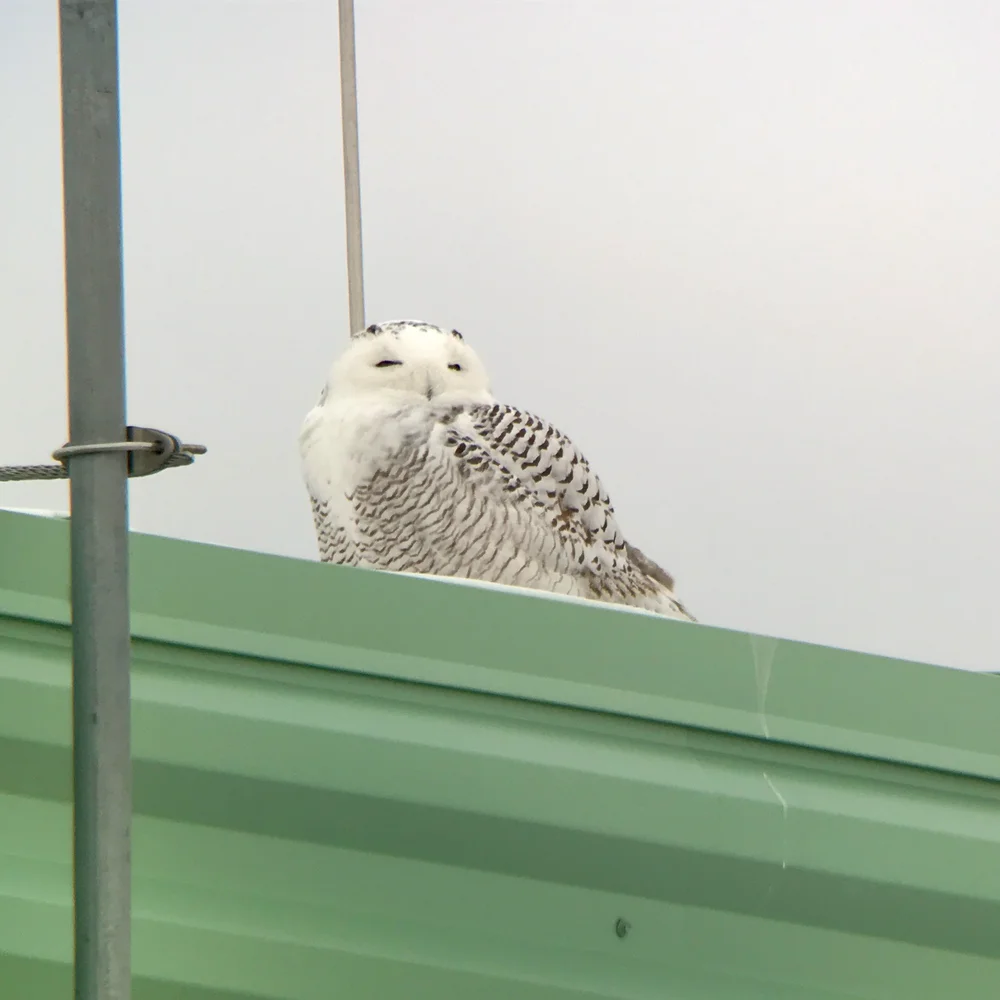
Female snowy owl perched on a building at the MSP Airport. How I normally see them every winter.
Snowy owls are something I regularly see in Minnesota. The Minneapolis/St Paul Airport gets a few overwintering every year. I’ve always wondered what it was like to see them on their breeding territory up in the Arctic, especially as I’ve followed Project SNOWstorm and all they have learned about snowy owl seasonal movement. When I headed up to the Arctic portion of Alaska last summer with Zugunruhe Tours, I got my wish. Fun fact that I learned about the name of the town formerly known as Barrow?
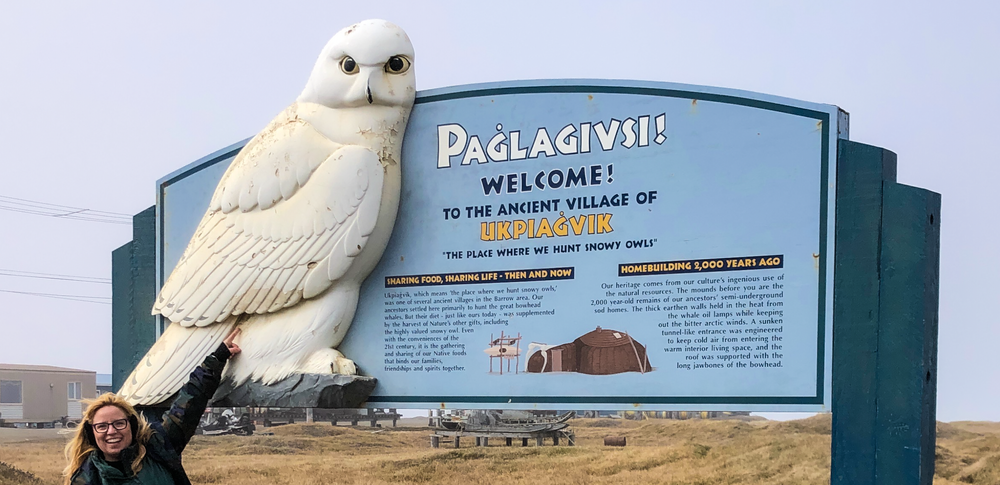
Standing at the town sign! Wait…what does that sign say?
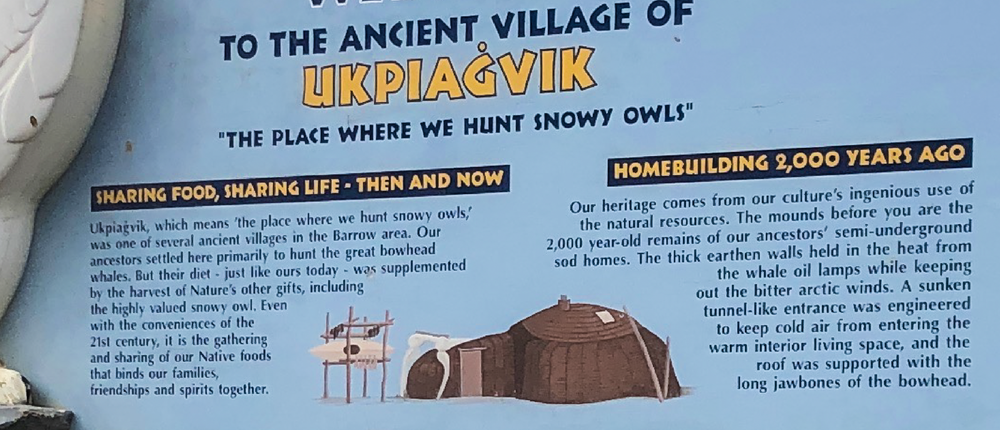
According to the sign, this town’s name means “the place where we hunt snowy owls.”
What some people in the US know as the town of Barrow, AK is now called “Utqiagvik” which is a recent spelling of the town’s ancient name “Ukpiagvik.” According to the town sign the name means, “the place where we hunt snowy owls.” I chuckled when I read that. This sign made me think of how in the winter when snowy owls arrive, the “Owl Police” get riled up about how close people get to snowy owls. What would they think of the traditional town name?
I had a conversation with my friend Mark Martell, a biologist about snowys. “These poor things, they come down south and there are all these trees, that has to be confusing. They must wonder how to find anything.”
“Or,” Mark said, “they think, ‘This is GREAT! We need some of these up in the Arctic! I can hear and so so much futher!”
Fair point, Mark.
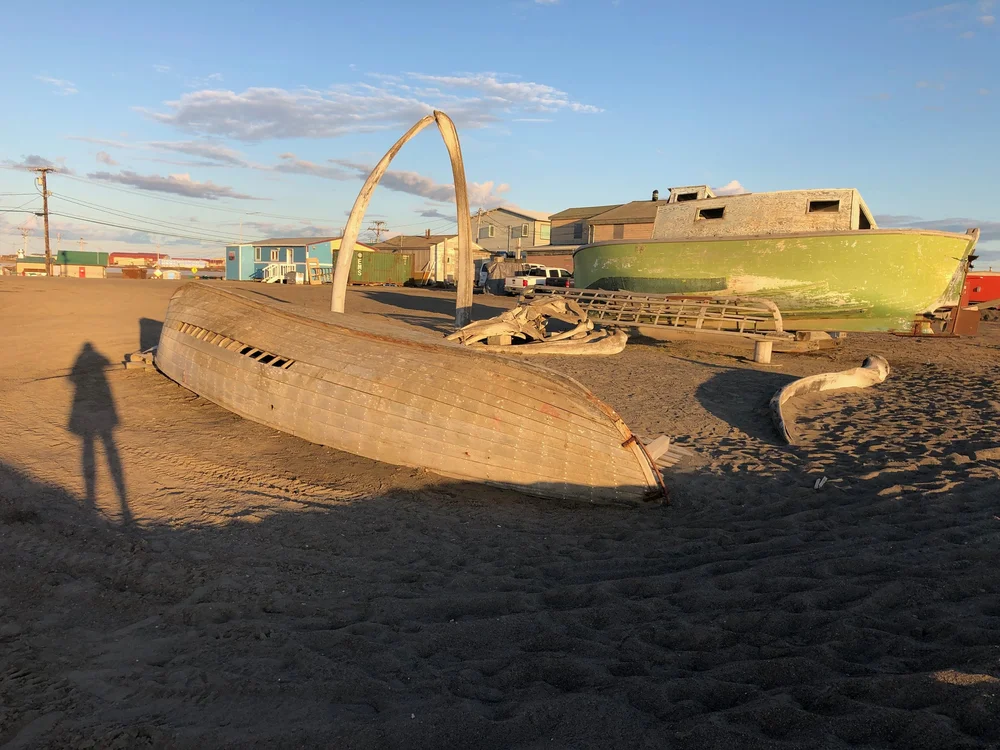
Utqiagvik has short buildings and no trees.
Looking around the town, I could see how it kind of resembled an airport. Some of the building are hangar-like, lots of open space, and trees. It’s right on the Arctic Ocean so lots of opportunities to hunt right on the sea ice.
Even though I was technically in the United States, it still felt like a foreign country because life is so very different there. There is no road to the town. You cannot just drive up with your trailer. You can only get in by boat or plane…and based on weather, that’s not a guarantee you’ll get in or out on the day you planned. Anything people need that is not in the immediate area has to be flown or shipped in. Conversely, anything you don’t need anymore also has to be shipped out. Car has broken down? Do you pay to have it shipped away or let it stay where it is. Along with that, it’s not easy to get food in and out. Really want to those fresh delicate fruits and vegetables…not an easy option. Avocado Toast isn’t a thing. Because of that and the Alaska Native population, there is subsistence hunting that helps people get through and they hunt what they need to in order to survive. Hence the sign about what the name of the town means.
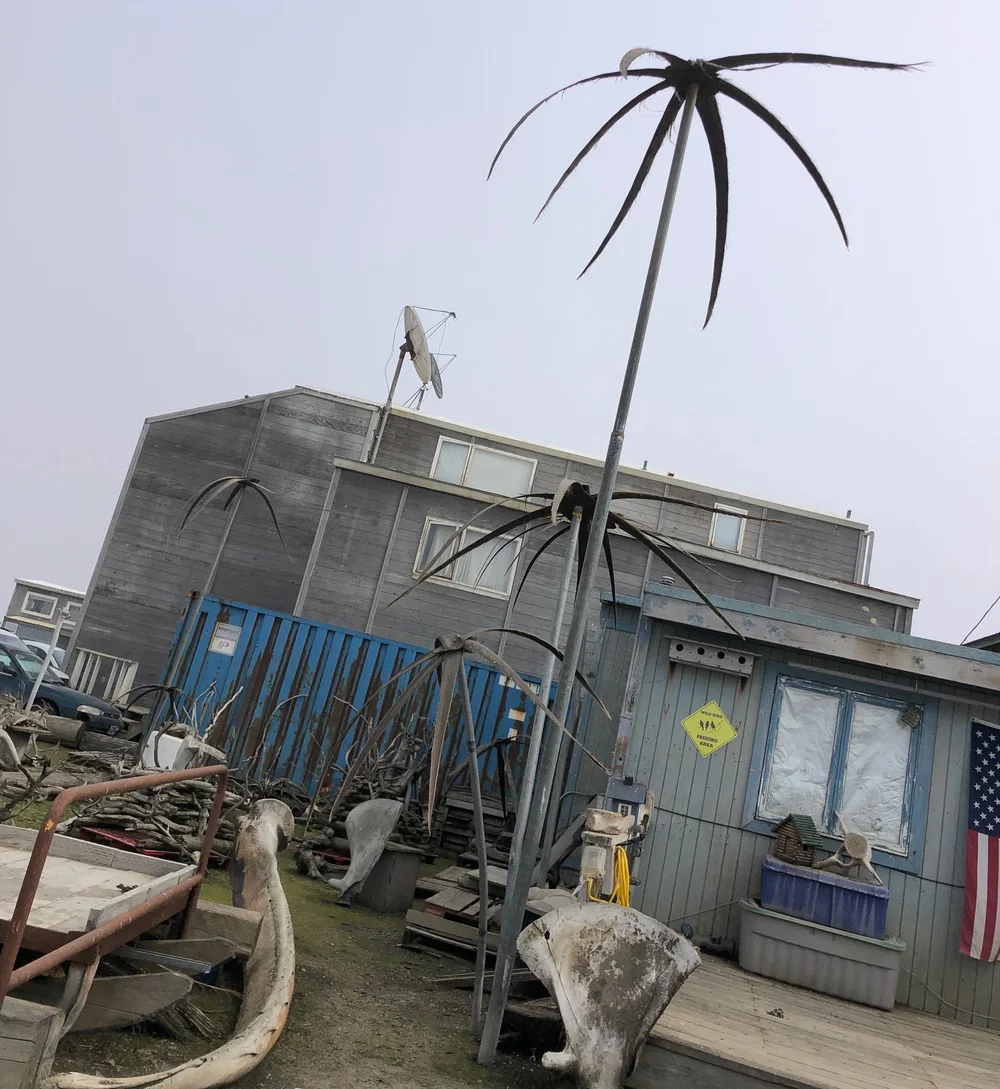
Palm trees made of baleen from whales.
Signs of subsistence are everywhere. Some yards took leftover baleen from whale hunts and turned them into “Arctic palm trees” or other decor. The town was preparing for a Solstice festival while we were there and chunks of whale could be found as people took it out to thaw. It was fascinating to be in that world and learn how survival is very different in this part of the United States.
The town sign with a snowy owl did not over-hype and despite its meaning, there were owls around town! As I headed out of our hotel to our truck for the day’s birding, one of the other participants pointed to the cemetery next door and noted the snowy owl perched on one of the grave markers. A man and his dog walked by flushing the owl, but it soon returned. Our guide took us on a road closer to the cemetery so we could get photos. It was a stunning adult male male snowy owl.
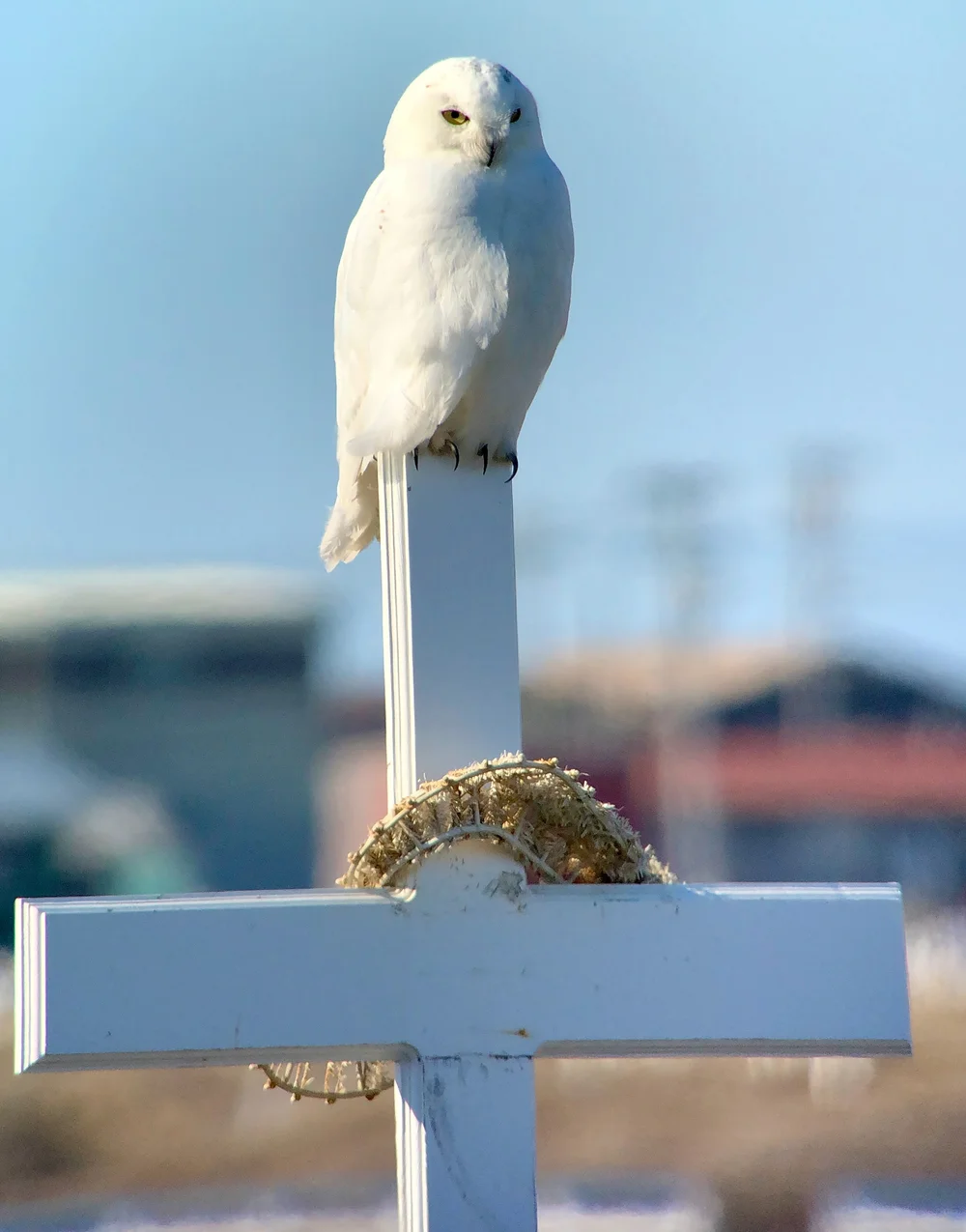
Snowy owl perched on a grave marker.
But not only were they in town, we saw them as we hiked the surrounding tundra. We saw many snowy owls, one day we saw about six at the same time. They were far away and spread out, but that is the nature of the tundra—you can see for miles. Even though some were far away, I could see in my scope that they were active and getting mobbed my shorebirds. What a treat!
Our guide was very careful to keep us away from nests while we were out on the tundra so we weren’t trampling young or disturbing birds on eggs. But one day as we were hiking the tundra and enjoying the Arctic sun, our binoculars found a light floofy thing through binoculars. We both said, “Uh oh” at the same time. I looked at the guide, “Is that…what I think it is?”
“I hope not,” he replied. We were worried that we had in fact wandered toward a snowy owl nest. I got my scope on it and was relieved to discover that it was not a snowy owl chick. I walked over to get a better photo of what we saw.

Just a random caribou head. Oddly not the weirdest thing we found on the tundra, that would have been the random hunk of whale meat.
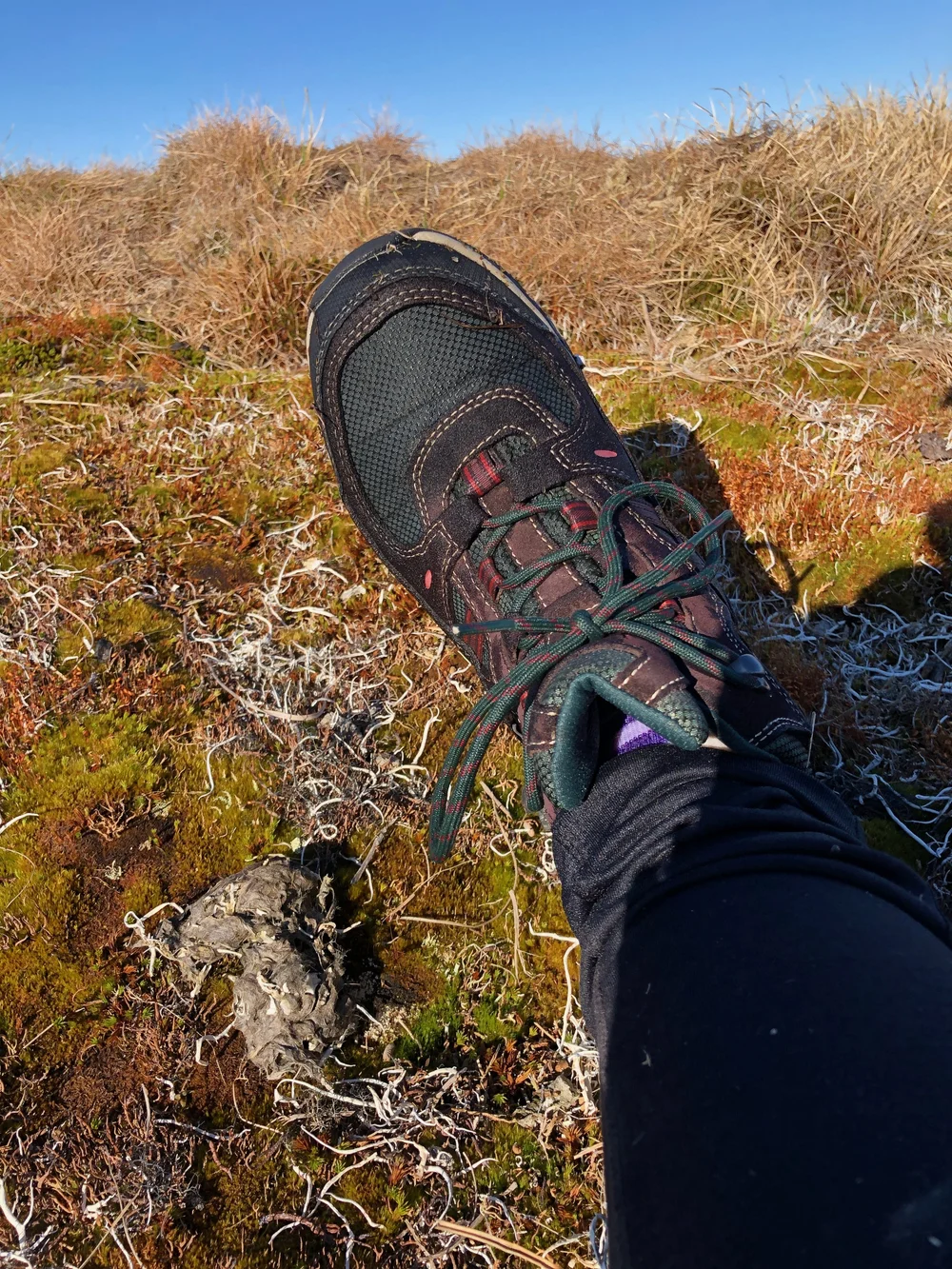
Snowy owl pellets.
Exploring Alaska wilderness is very free form. In many places there really aren’t any trails to follow, you just journey out. The tundra is a spongy wonderland and sometimes you end up in a puddle. As much as this post is about snowy owls, the real fun we were after were all the eider species. As we would work our way towards ponds to get closer to the ducks, we would use small rises to hide our presence. One of my best memories is hunkering behind a rise while a spectacled eider got used to me. The light was tremendously golden at 1:30am in the morning and pectoral sandpipers and snow buntings are singing all around me. I’m high enough on the vegetation that I can sit without my butt getting wet from the spongy ground. I stretched out my feet to enjoy the moment and that’s when I noticed the snowy owl pellet next to my boot. There was also some old white looking streaks of poop. Sometime not too long ago a snowy owl had perched here waiting for prey, digesting its previous meal. I love finding owl pellets and to find them on the tundra similar to how I might find great horned owl pellets in the woods totally delighted me. This pellet was chock full of lemming.
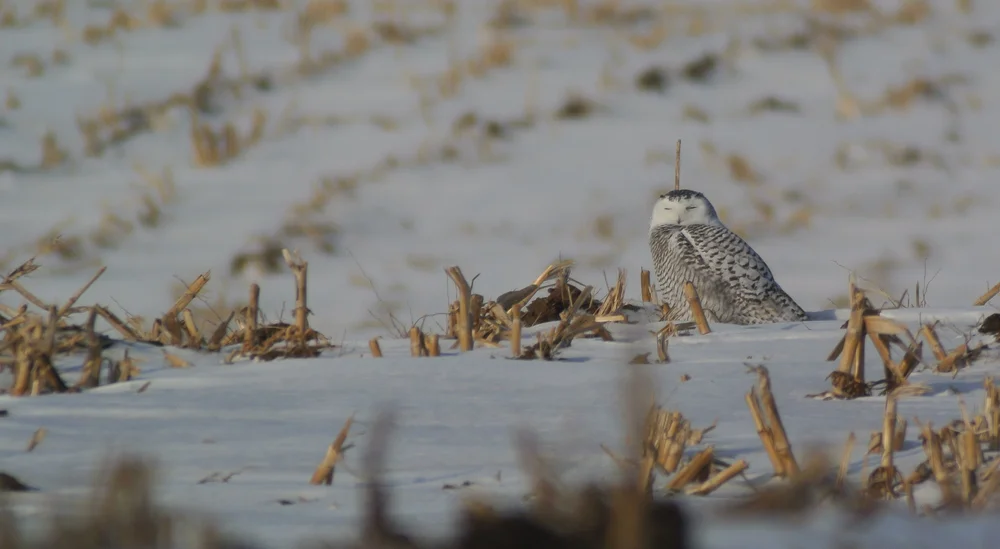
Snowy owl in a Minnesota corn field.
I now have a perspective when I see snowy owls in the lower 48. If you ever have the opportunity or find a bird tour company that will take you up to the Arctic, I highly recommend it. The snowy owls are cool and they are just the tip of the iceberg (ha ha) for all the fun that can be had. But what a treat to see these birds hunting and living in their breeding habitat.




![North Carolina’s Owls: 6 Common Species [ID Guide]](https://www.birdzilla.com/wp-content/uploads/2023/02/barred-owl-gl.jpg)





